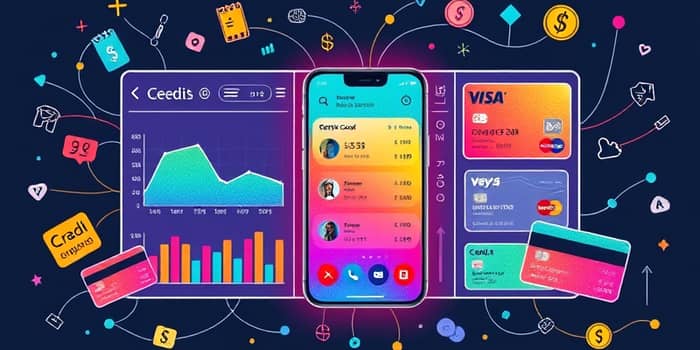
In today’s fast-paced world, keeping a pulse on your finances can feel overwhelming. With countless transactions happening daily, it’s easy to lose track of spending habits and overlook important bills. Modern budgeting apps offer real-time spending insights and warnings, empowering individuals to make informed decisions, curb impulse buys, and build lasting financial resilience.
Budgeting has come a long way since handwritten ledgers and envelope systems. Early adopters meticulously recorded every expense, category by category, juggling receipts and calculators.
Today’s tools can connect with your financial accounts—bank accounts, credit cards, and investments—pulling in data without lifting a finger. This shift has transformed budgeting from a monthly chore into a continuous, real-time practice. The convenience of automatic updates has not only saved time but also revolutionized how people perceive and manage money.
Linking debit and credit cards to a budgeting app triggers a ripple effect of benefits. First and foremost, it automatic import and categorization of transactions. Instead of logging every purchase manually, the app fetches charges directly from your bank, assigning them to categories like groceries or subscriptions.
This process enhances financial visibility and control, eliminating blind spots and ensuring no expense goes unnoticed. Users can see exactly where their money goes, spot recurring costs, and react promptly to unexpected charges or overspending patterns. The result is a sense of empowerment and proactive money management.
When cards are synced, budgeting apps unlock a suite of powerful tools designed to simplify financial oversight:
Choosing the right app depends on your needs: simplicity, depth of analysis, or collaborative features. Below is a snapshot of top contenders in 2025:
*Spendee offers card syncing only on premium plans.
While powerful, card syncing isn’t without hiccups. Some users face bank connection issues, where institutions limit or delay data sharing. Others find the learning curve steep when exploring advanced analytics or investment tracking modules.
Moreover, premium subscriptions—ranging from $15 to over $100 annually—can deter budget-conscious individuals. Free tiers often force manual entry or receipt scanning, eroding the time-saving benefits of automation.
Security tops the list of user concerns when linking financial accounts. Reputable apps employ bank-level encryption and read-only access, meaning they can retrieve data but cannot move funds.
Multi-factor authentication, biometric logins, and regular permission reviews further bolster safety. By choosing established platforms with transparent privacy policies, users can rest assured that their sensitive information remains protected.
As technology evolves, budgeting apps are integrating broader financial insights. Users can now track net worth alongside day-to-day expenses, blending budgets with investment performance.
Collaborative features are also on the rise. Couples, roommates, and families can manage joint expenses and split bills within a single shared workspace.
Imagine Sarah, a busy professional who links her checking and credit card to a budgeting app. Within minutes, the app imports her past six months of transactions, categorizing them automatically.
Every time she swipes her card, Sarah sees the purchase reflected on her dashboard. When she nears her dining-out budget, an alert nudges her to reconsider that extra coffee or takeout meal. At month’s end, a custom report highlights that she spent 20% more on rideshares than last quarter, encouraging her to explore cost-saving alternatives.
To maximize the benefits of card syncing, start by choosing an app compatible with all your financial institutions. Confirm which accounts and cards sync automatically in the free vs. premium versions.
Regularly review and adjust your categories to ensure transactions are correctly classified—an occasional override trains the app’s machine learning algorithms for greater accuracy over time.
Finally, set up personalized notifications for upcoming bills, unusual charges, or budget thresholds. These timely reminders help you stay on track, avoid fees, and reinforce positive spending habits.
By embracing synced cards and intelligent budgeting platforms, you transform financial management from a burdensome task into an empowering journey. With each automated update and customized insight, you inch closer to your goals—be it debt freedom, robust savings, or long-term wealth building. Start linking your cards today and discover the confidence that comes from clear, real-time financial visibility.
References













